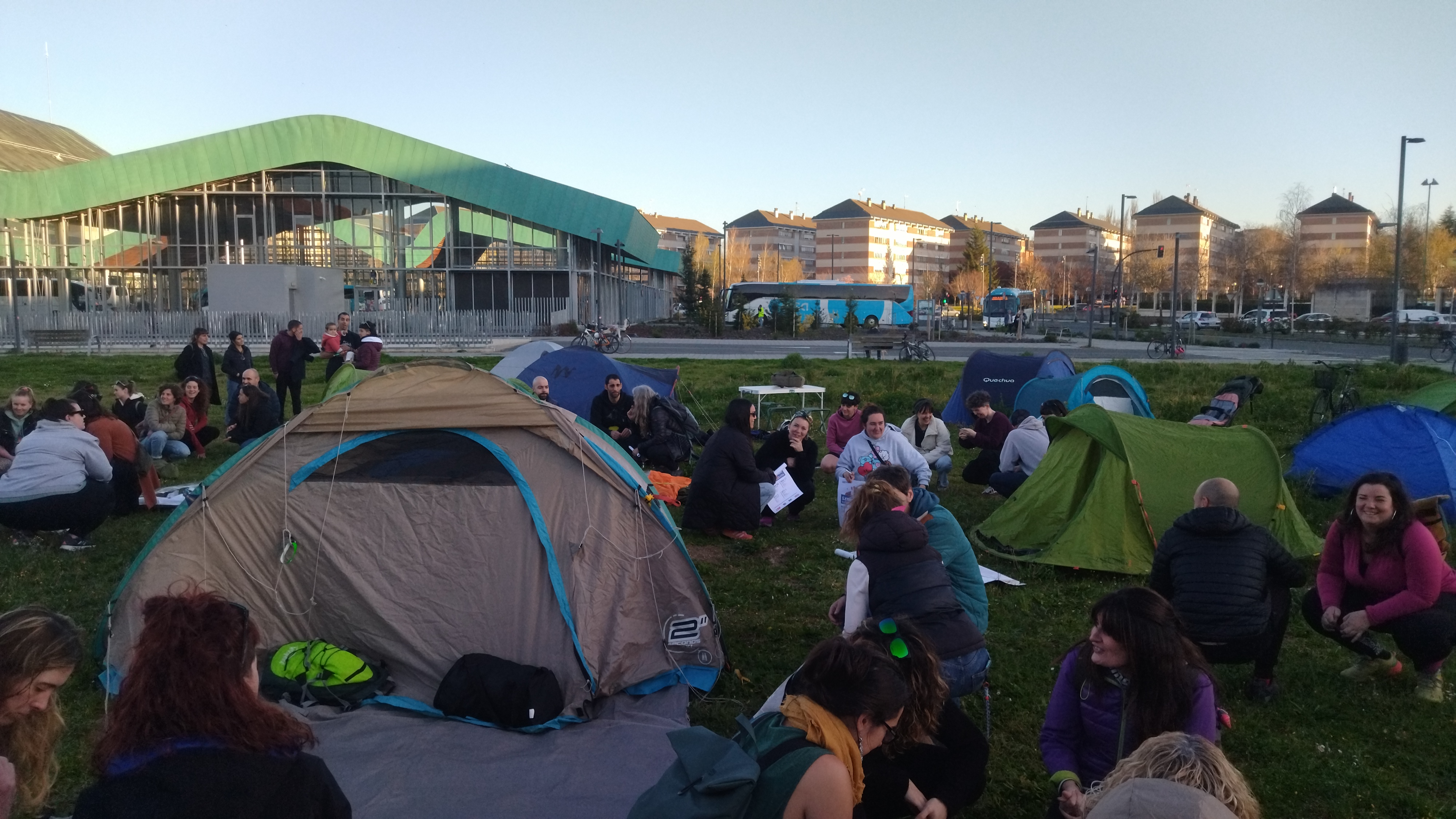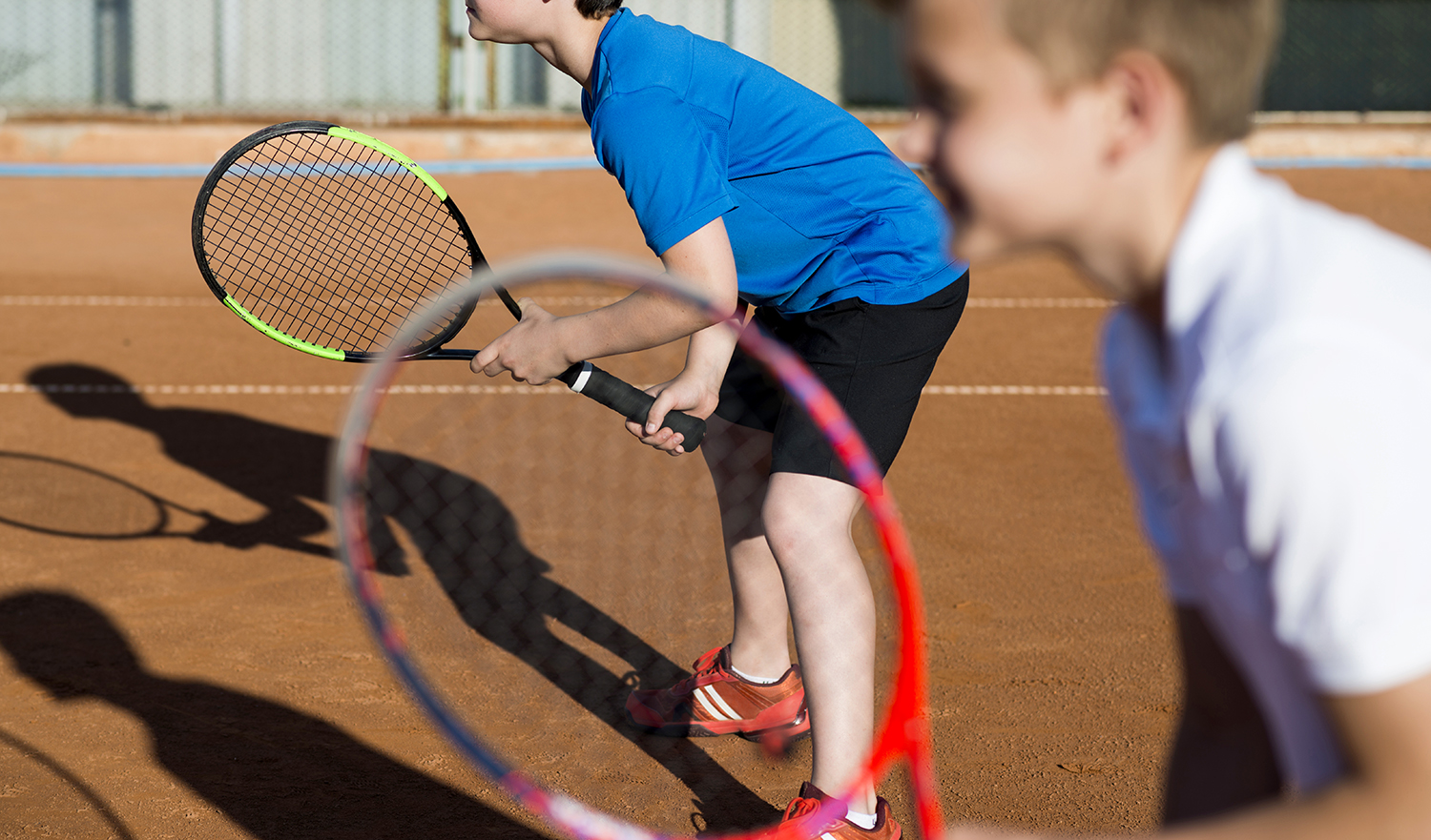On Mount Jaizkibel, clearer than in textbooks
- Hondarribia’s students have helped fertilize the seeds of the motherhood tree and subsequently planted them in Jaizkibel, to slowly recover their forest; they have also made a spectacular three-dimensional model of the mountain; and the teachers have devised an urban plan in Jaizkibel, for young people to reflect on their ecosystems and threats. The mountain of the people has been the basis and axis of their learning.

The month of February is the end of the Amestu Jaizkibel project, in which the students have planted fruitful acorns on the mountain to become strong and large trees in the future. In particular, it is the maternity acorn, which has been planted. From the Talaia Institute of Hondarribia they have walked to a clearing of 15 x 15 meters, which is prepared for planting. These are twelve Applied Sciences students, who will probably go to some medium degree module or to Vocational Training, and who are often considered poor students. The project aims to be an extra dedication and motivation for them. They say “Hau gozada,” hitting the azada hard.
They have been helped by forest guards from Jaizkibel and Peñas de Aia. They have planted 70 males following the directions of the Jaizkibel Iker Luarizaierdi forest guard: “We will not plant them in rows, because we want it to be a natural forest, and we will mix them up, à la carte.” Clean the surface, remove the litter, make a hole with the hoe, soak the ground, place the plant properly and cover it properly to secure the plant. “We will plant small shrubs that already have roots to be better attracted; not everyone will go ahead, but that is a natural competition.”
If the man hadn't shook his hand, 89 percent of Jaizkibel should have had a dream, but today it's only 8 percent of the land.
Anais Mitxelena of the Aranzadi Society is also present. He explains that if the man had not put his hand in Jaizkibel, 89% would have been a dream, but today they only occupy 8% of the space. At present, in Jaizkibel only 12% is forest and 25% are plantations of pine and chestnuts, favoring monoculture, which only has other types of trees. Students have seen in class the differences between forest and plantation. Natural forests are better for indigenous flora and fauna than cultivated trees that tend to be exploited – and their economic benefit – as well as to combat climate change. Thanks to the planting of acorns, the students know that they will help to recover the forest from the caves of Jaizkibel, as human intervention is not always harmful.
Before you go, you've kept one of the mothers' bushes to plant it on the grounds of school.
.jpg)
How to take care of the acorn for fertilization?The
Amestu Jaizkibel initiative started in October a few months in advance: they were looking for acorns to Jaizkibel. Also on this occasion, Luarizaierdi was in charge of guiding the forest guards, and told them about their trade, of the animals and plants of Jaizkibel, of the reasons why the mountain is protected, of the differences between slaughterhouses and oak trees... The students served to know the forest they have at their disposal and learn to sample. In the following months, the collected acorns were fertilized at school, correctly wetting the acorns throughout the week, cleaning them if the males were taken out, casting seeds that were dried... But in the case of mothers it has been a bad year of acorns, of poor quality and poor quality, and they decided to return to Jaizkibel to collect the acorns from the oak. Later, students from all Compulsory Secondary Education (12-16 years) took care of and monitored the seeds, and began a new method: to put the acorn in the wet sand and keep it in the fridge at 4 degrees, imitating the winter. So yes, they managed to fertilize the acorns and take root.
Professor Izaskun Zenoz says that the interest and involvement among the students has been evident, that once the connection with the project has been created, when the value and meaning are seen, the commitment comes next: “On the winter vacation there was no one to take care of the seeds and worried students were willing to take them home. Finally, they came up with the greenhouse, the draft was elaborated, and in the Technology course a small greenhouse was mounted to introduce the scientifics during the holidays. The seeds would collect the water from the rain with some holes in the plastic, with no risk of drowning. It was a normal greenhouse, made in two weeks, but enough to achieve the goal, and built with will and enthusiasm.”
The fertile acorns were transferred to the nursery that the Provincial Council of Gipuzkoa has in Urnieta to be planted by the forest guards the following year. In return, the students collected the acorns of the mothers collected last year and fertilized in the nursery, which were planted in February in Jaizkibel.
Izaskun Zenoz: "The students were worried that there was no one on vacation to take care of the seeds. In the end, in the Technology course, a small greenhouse was mounted to introduce the stains during the holidays."
The students Jon Arrieta and Amaiur Barron say it has been a much appreciated experience: “We’ve learned how to maintain and care for the seed, we’ve had moments of frustration, because we thought that the more water we throw better, but it’s not so simple, we’ve had to look for alternatives…” Will they come back after the class to visit the planted trees? “Sure,” we’ve been answered.
In addition, Jaizkibel has given Talaia the
perfect excuse for the Technology subject: they have made a mountain model with a three-dimensional printer. Guided by Professors IRAITZ Zuazabeitia and Eder Valladares, the young people have learned to interpret all that information, to use the software that processes the data, to give it volume, to print in three dimensions, to assemble the model… “It has also served us to address other issues, for example, why the wave is created in a given site, why the casino is here and not there…”, says Valladares. Being able to enter the data correctly, correct in the use of the printer and complete all the grids has been a complex job for many hours. A 75 centimeter wide mockup and a meter long has been an adventure for everyone. “I don’t think there are many models of this size in Jaizkibel and for us it has also been a great learning process to work with a printer like this, a new world.”
.jpg)
Along with
Izaskun Zenoz, Amaia Agirre, Maier Gereka and Iñaki Sanz Azkue have taught as Biology teachers. Among them, taking as a Jaizkibel axis, a teaching unit has been created for students of 1st ESO (11-12 years) and 4th ESO (15-16 years). The objective is to know the local ecosystems, fauna and flora, and that this knowledge generates new connections around the need to preserve Jaizkibel and nature in general. The didactic units start from a real problem: to imagine that on the coast of Jaizkibel (Justiz area) there is a restaurant, housing, a small boat pier, an access road, a water access channelling and a playground, and that the administration has asked for the opinion of the biologists to decide whether or not to. Students have played the role of biologists. The process has been based on dynamics such as the search for information in groups, mutual presentation, the use of the Kapen card game of Hondarribia animals and plants and the excursion to Jaizkibel.
Imagine that a private promoter and the administration have asked for the opinion of biologists who want to build homes on the coast of Jaizkibel. Students have played the role of biologist
At the end of April they approached the mountain, the areas of housing, restaurants, etc. The private promoter of the activity wanted to build. In these areas, six ecosystems (urban, rural, river, forest, swamp, cliff) were stepped to analyze existing species and threats and to deduce the influence of the private project. 400 students in two shifts, accompanied by the Aranzadi Society.
The collective reflection puts an end to the didactic unit: the students do not believe that the project of the promoter should be carried out, as it would cause enormous harm. And what alternative are they going to give to the administration? Young people have said that if there is a real need to build housing, it should be done in the urban area.
Finally, two professors from the university have evaluated the success of the didactic unit: before they started they passed the test to the students (what is the biodiversity, what do you know about the protected spaces, what species live in this particular ecosystem, what these or other species eat, if you think Jaizkibel is well preserved…) and then they completed the same test. The difference has been notable, for the good, in the concepts and content interiorized, in the knowledge of the environment, as well as in the interest and the initial and final attitude of the students towards biodiversity and nature.
From class to
plaza At the end of May they have rounded up the work of the whole course; they have organized an exhibition open to the people in Hondarribia for a week: a three-dimensional model, information about the Amestu Jaizkibel project, posters and photographs representing the fauna, flora and local ecosystems, a video that summarizes everything done… And very close to the exhibition, the authentic treasure of the students, a space Mount Jaizkibel.
.jpg)
Garai kuriosoak bizi ditugu eta bizi gaituzte, zinez. Hezkuntza krisian dela dioten garaiak dira eta, gutxien-gutxienean, aliritzira, ba aizue, 2.361 urte ditu gaurgero boladatxoak.
Ez zen ba debalde joan Aristoteles bere maisu maite Platonen akademiatik lizeo bat muntatzeko... [+]
Lehengai anitzekin papera egitea dute urteroko erronka Tolosako Lanbide Heziketako Paper Eskolako ikasleek: platano azalekin, orburuekin, lastoarekin, iratzearekin nahiz bakero zaharrekin egin dituzte probak azken urteotan. Aurtengoan, pilota eskoletan kiloka pilatzen den... [+]
Seaska Sarean inklusio egoeran dauden 165 ikasleei laguntza bermatzeko hasi dute kanpaina, antolaketa propioa eratuta. Frantziako Hezkuntza Ministerioaren jarrera salatu dute kanpaina aurkezteko prentsaurrekoan, behar bereziak dituzten haurren inklusiorako baliabide... [+]
Hezkuntzari buruzko legediak, Ekonomia Lankidetza eta Garapenerako Erakundearen eta planetako jaun eta jabeen aginduei jarraituz, ikasleek ikasketa etapa bakoitzaren amaieran “irteera-profil” jakin bat izatea bilatzen du. Ez pentsa profila zerbait itxia eta bukatua... [+]
























